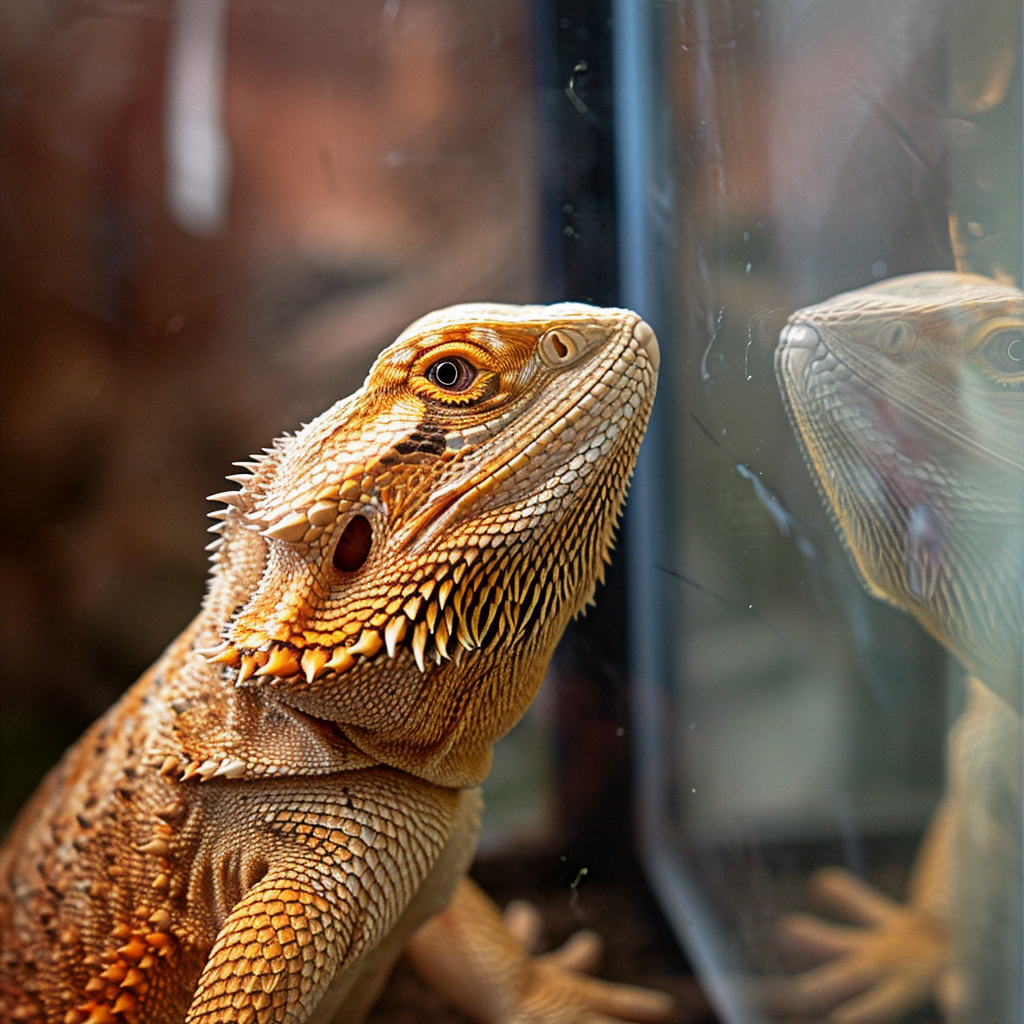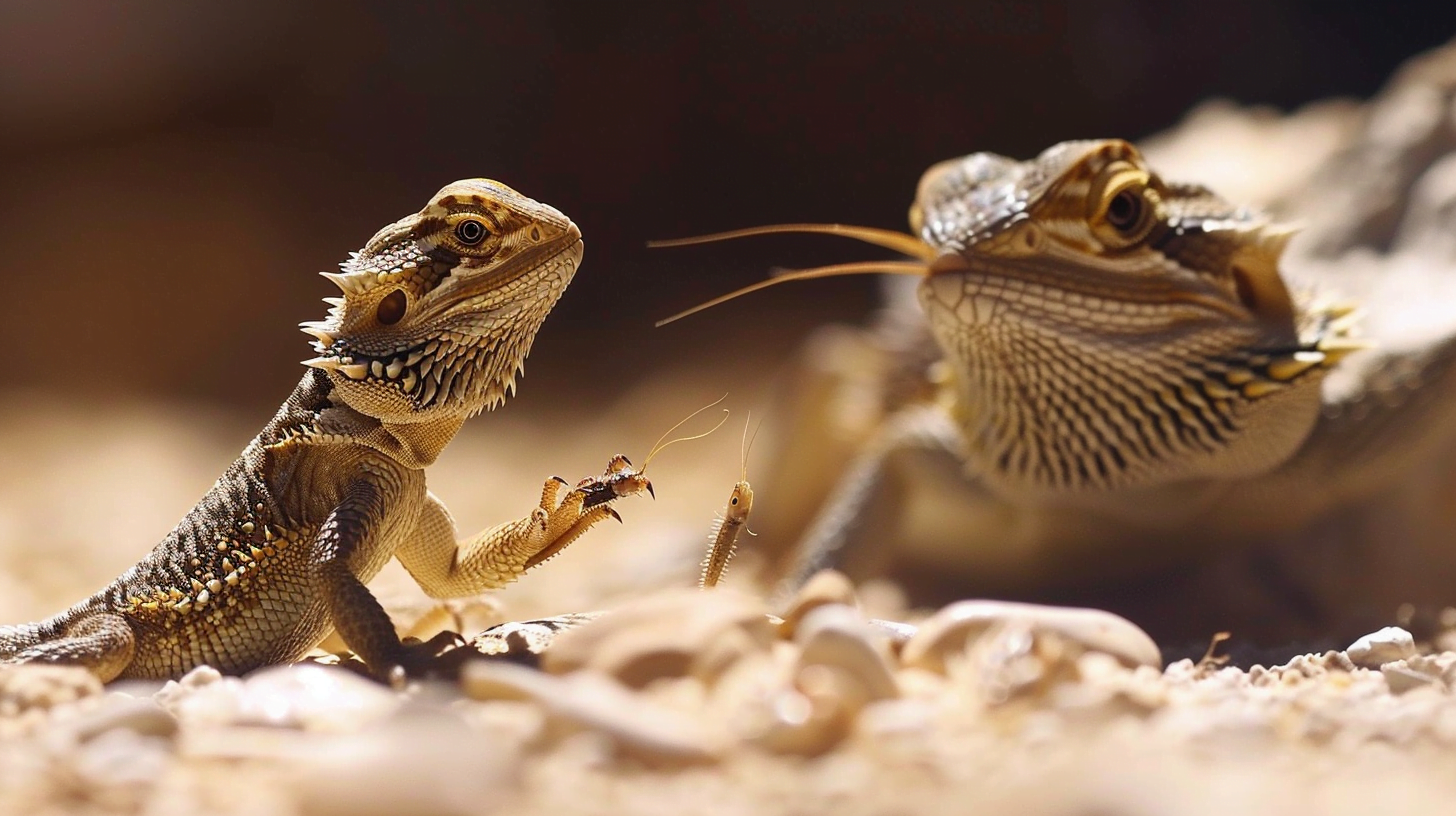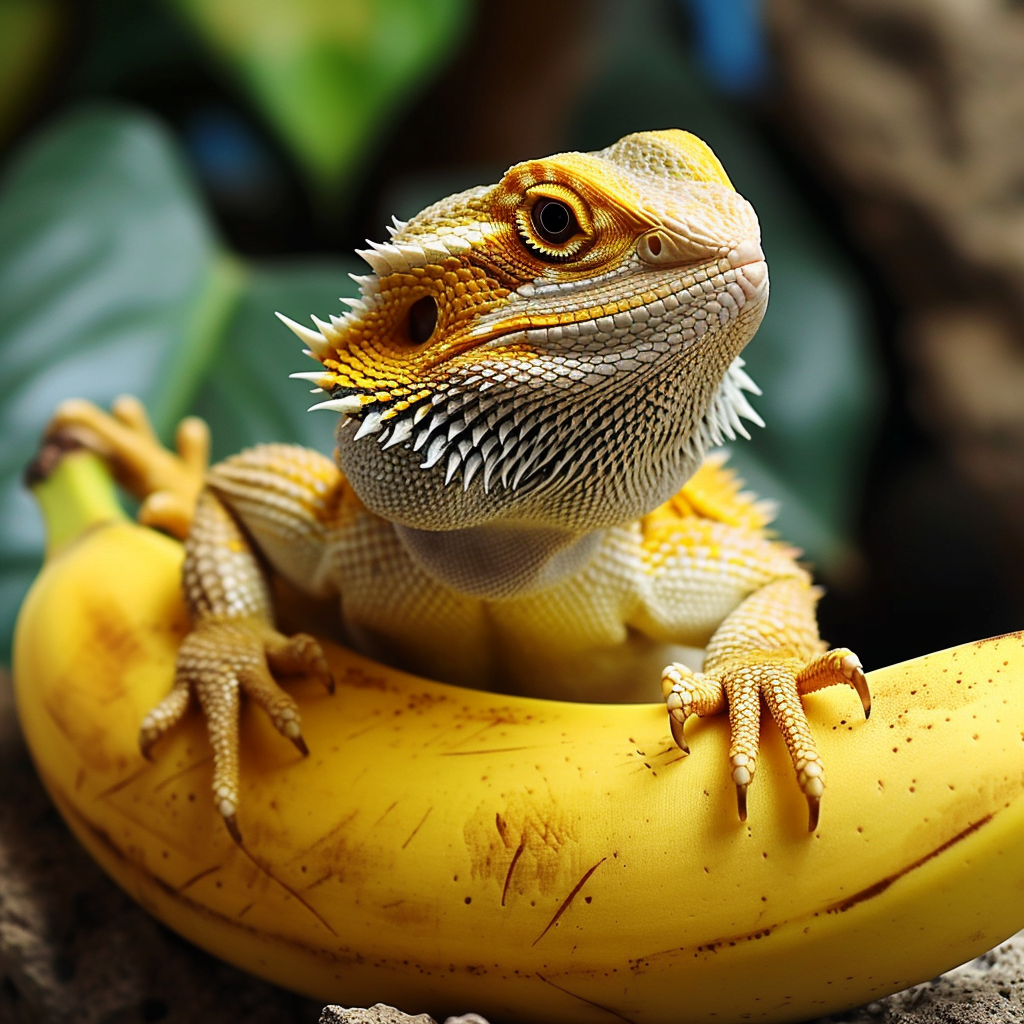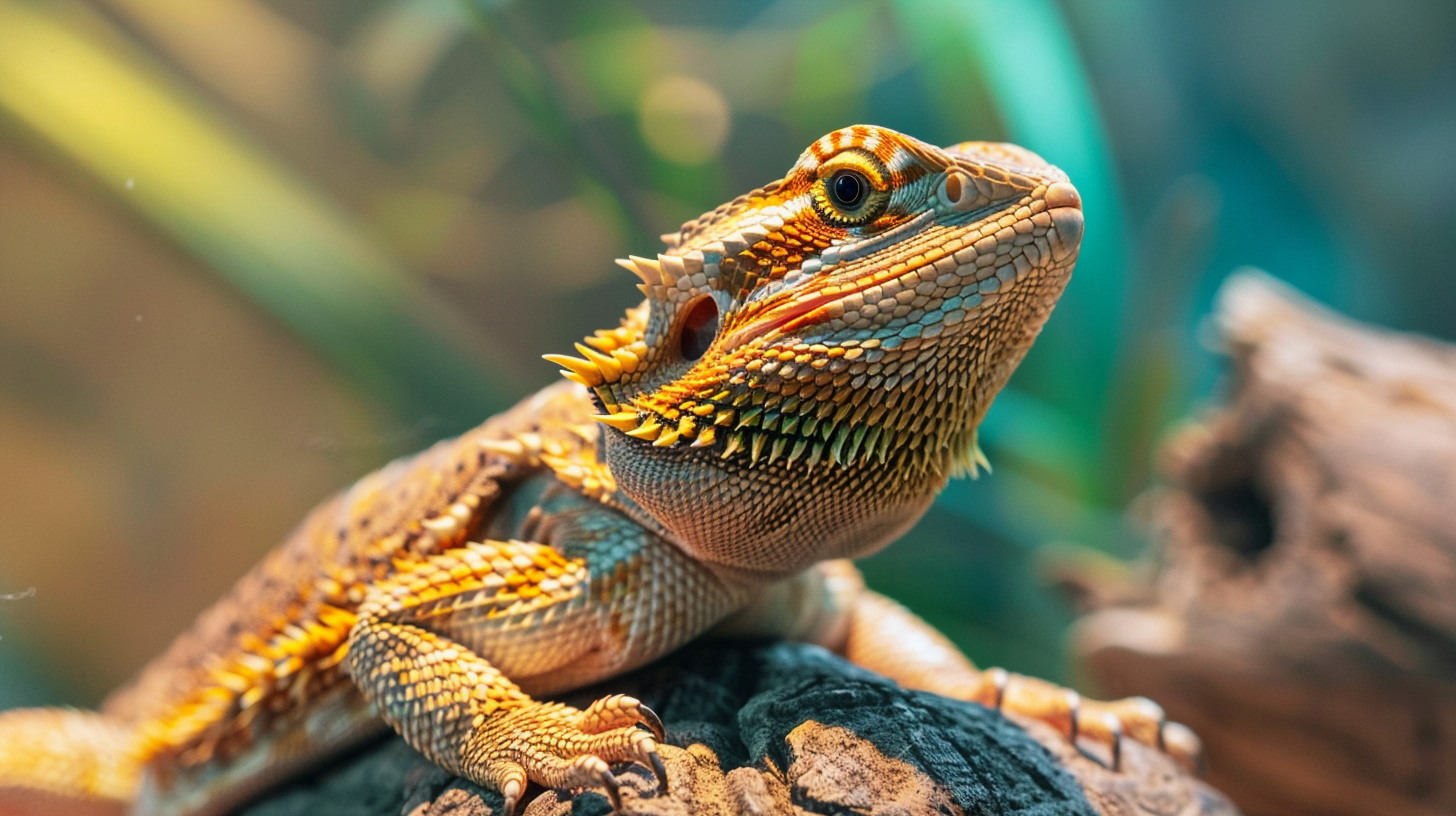Table of Contents
As a bearded dragon owner, you’ve likely noticed your scaly friend frantically scratching at the glass walls of its tank from time to time. This common behavior can seem confusing, concerning, or downright annoying at times.
You watch as your bearded dragon races around the tank, claws scrambling against the glass. This repetitive scratching may leave behind faint foggy streaks on the glass as well as small scratches over time.
Some occasional glass surfing is normal, but excessive scraping and scratching may indicate issues with your pet’s environment, health, or behavior. If your bearded dragon is scratching at the glass relentlessly, you’re probably wondering:
Why Does My Bearded Dragon Scratch at the Glass?
In this article, we’ll explore the top reasons for glass scratching in bearded dragons. We’ll also provide solutions to stop this irritating behavior through proper husbandry, handling techniques, tank enrichment, and veterinary care when needed. Read on to get answers to your bearded dragon’s glass antics!
Reasons for Your Bearded Dragon Scratching at the Glass
Bearded dragons scratching at the glass walls of their enclosure is a common behavior that many owners observe. While some occasional glass surfing is normal, excessive and repetitive scratching can indicate an underlying issue that needs to be addressed.
There are several potential reasons why your bearded dragon may be scratching at the glass. Getting to the root cause of the behavior is key to stopping it. With proper husbandry and care, you can minimize unnecessary scratching.
Trying to Get Your Attention
One of the most common reasons bearded dragons scratch at the glass is that they are trying to get your attention. Bearded dragons are intelligent creatures that often recognize their owner. When they see you approaching the tank, they may start frantically scratching as a way to say “Hey! Come hang out with me!”
Specifically, they may be hoping to alert you that they are ready to come out to eat or be handled. Baby and juvenile bearded dragons tend to exhibit this behavior more frequently. As they get older, they learn that you will take them out and feed them on your own schedule.
Exploring Their Surroundings
Bearded dragons are naturally curious and love to walk around and explore their habitat. However, the smooth glass walls prevent your bearded dragon from being able to climb out and survey its territory.
The scratching behavior is your bearded dragon’s attempt to keep moving and navigate a seemingly never-ending, transparent barrier. This instinct kicks in despite the fact that glass surfing ultimately gets them nowhere.
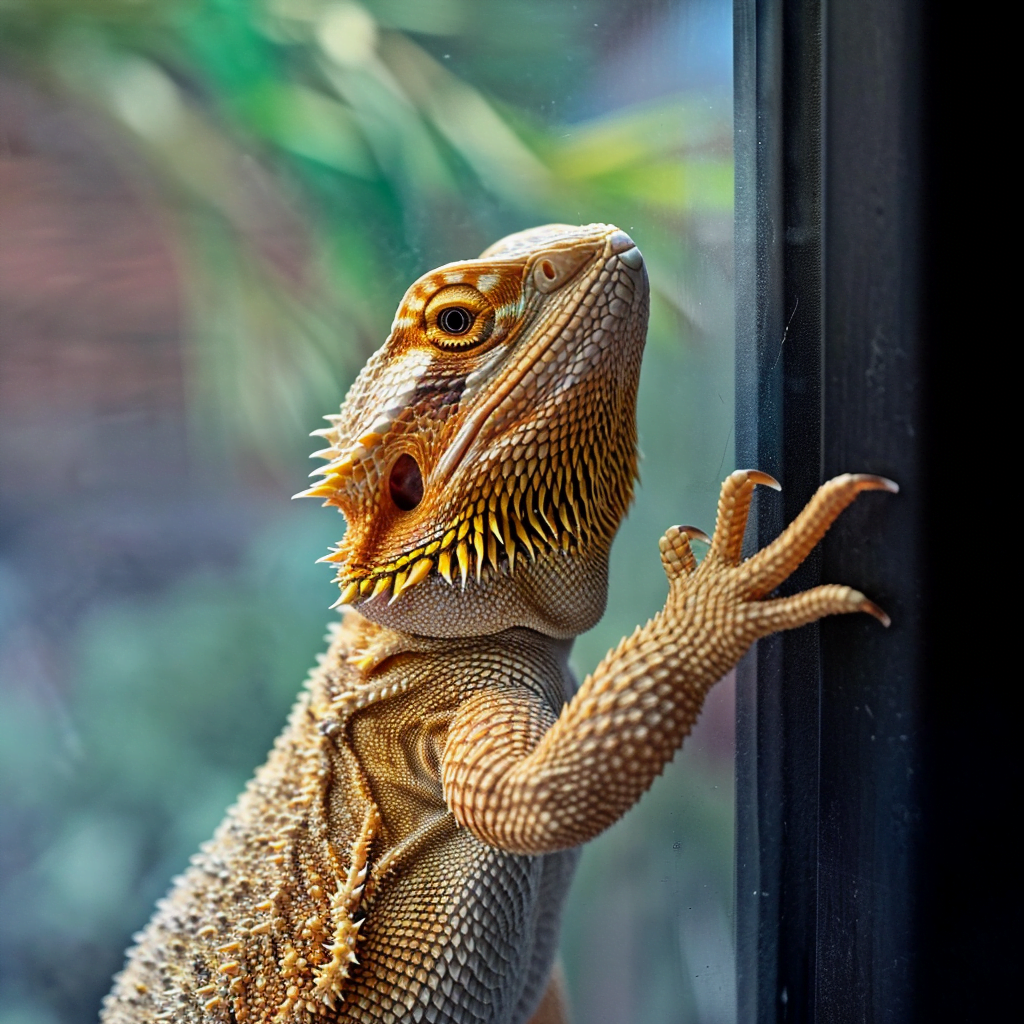
Seeing Their Reflection
Bearded dragons are territorial and may not initially recognize their own reflection in the glass. When they see the “other dragon” in the glass, they try to scratch at it to pick a fight or interact with who they perceive to be an invader of their domain.
Of course, no matter how much they scratch, the other bearded dragon won’t go away, because it’s just their own reflection! This can cause repetitive scratching at certain spots where reflections are strongest.
Improper Tank Setup
An improper bearded dragon habitat setup is one of the most preventable causes of excessive glass surfing. When dragons don’t have adequate floor space, basking temperatures, hiding spots, substrate to dig in, or other enrichment items, they can become stressed and start scratching obsessively.
Some specific issues that can lead to glass surfing include:
- Tank Too Small: The standard minimum size for an adult bearded dragon tank is 4 x 2 x 2 feet (120 x 60 x 60 cm). Anything smaller can limit your dragon’s ability to move around comfortably.
- Lack of Proper Heating: Bearded dragons are cold blooded and require a basking spot between 95-105°F as well as an overall gradient with a cool side around 80°F. Without this heat gradient, they become inactive and stressed.
- No Hiding Spots: Proper hides are essential to make bearded dragons feel secure. Avoid open tanks and provide a minimum of two snug hiding spots.
- Poor Substrates: Avoid calci-sand, reptile carpet, wood shavings, and other particulate substrates if your dragon is glass surfing. Try a solid substrate like tile or non-adhesive shelf liner.
Shedding Their Skin
Glass scratching is a way for bearded dragons to rub off their dead, flaky skin during the shedding process. If your dragon is about to shed, create a humid hiding area in the tank and consider soaking them in lukewarm water to help ease the skin shedding process.
Proper humidity is also key. Ideal levels are between 20-40%. If their enclosure is too dry during a shed, the scratching behavior will get worse as they struggle to remove unshed skin.
Stress or Anxiety
In some cases, abnormal scratching behaviors are a sign that your bearded dragon is under excessive stress or anxiety. This stress can stem from a variety of husbandry-related factors, including:
- Improper temperatures and environment
- Inadequate tank size
- Lack of handling and human interaction
- No hiding spots
- Poor diet
Chronically high stress levels cause repetetive scratching as well as more serious health issues like decreased appetite and lethargy. Addressing the root cause of the stress is critical.
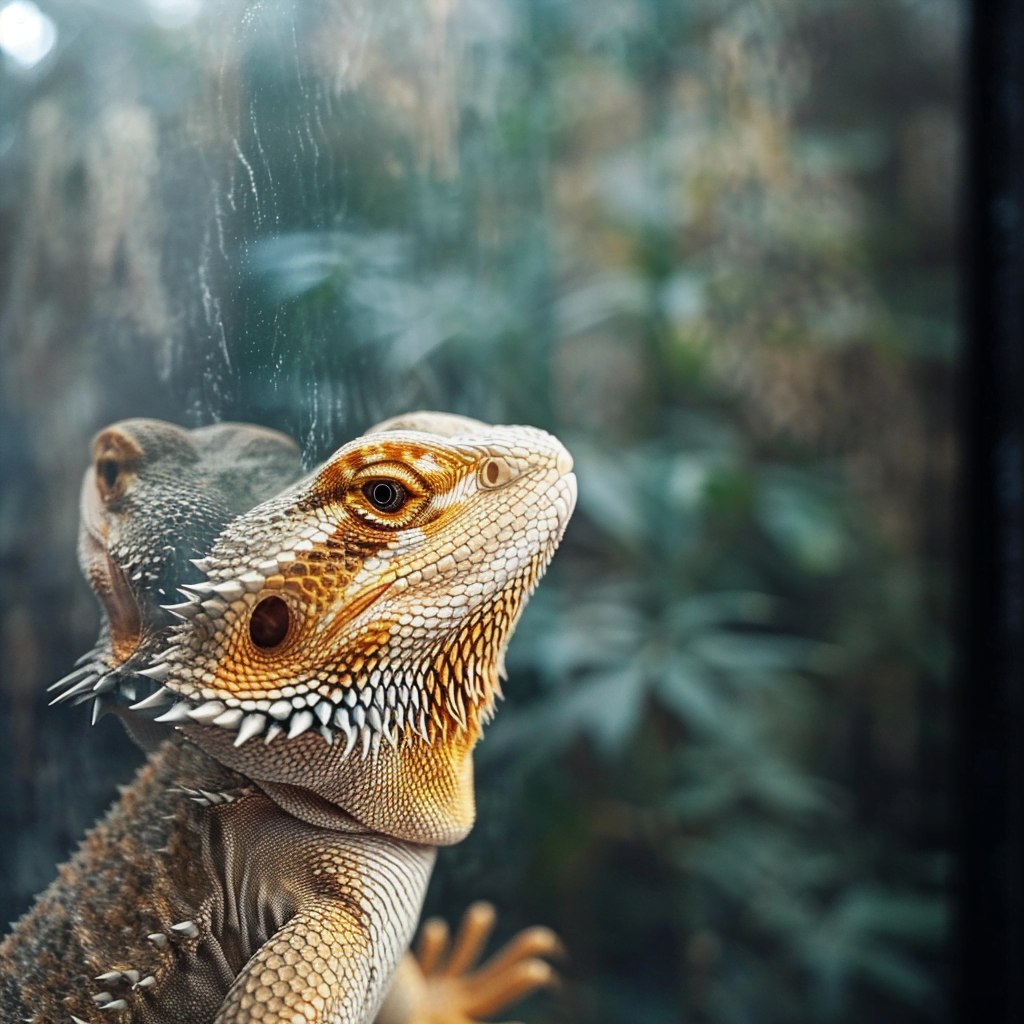
Solutions to Minimize Glass Scratching
If your bearded dragon is excessively scratching at the glass, here are some steps you can take to identify and address the underlying problem:
Provide Proper Tank Setup
Carefully evaluate your bearded dragon’s tank setup and environment using the guidelines provided earlier. Make any necessary adjustments to temperature, tank size, substrate, hides, etc.
Increase Handling and Interaction
Spend more time interacting with your dragon if they seem bored or stressed. Try to get them out daily for handling and supervision, up to an hour or more per day for juveniles and younger dragons.
Improve Their Diet
Make sure their diet includes adequate protein, vegetables, and calcium. Live insects should make up a large portion of their diet, with veggies comprising about 20% once they are juveniles.
Enrich Their Habitat
Give them branches, rocks, tunnels and other decor to climb on and explore. You can also add safe potted plants like aloe vera for added enrichment. Rotate new decor items to keep their environment interesting.
Use Alternate Surfaces
Redirect the scratching to safer surfaces like scratching posts, rocks, logs, branches, or floor tiles placed along the bottom of the tank. Also consider adding a background on the tank walls to reduce reflection.
See a Vet If Needed
If you can’t identify the cause or the scratching persists despite changes, have your bearded dragon examined by an experienced reptile vet, as it could signal an underlying health issue.
The Bottom Line
Bearded dragon glass scratching generally occurs when something in the habitat needs addressed. With attentive care, modifications, and patience, this behavior can be minimized or eliminated in most cases. Always try to identify and treat the underlying problem triggering the behavior, rather than just the symptom of scratching itself.

